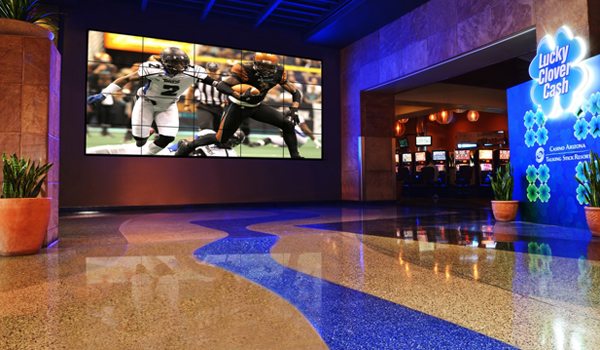
Shopping malls, doctors’ offices, corporate board rooms, restaurants and student classrooms are just a few of the common places that feature engaging audio visual (A/V) technology.
Before the boom of the digital age, construction planning included four main utilities: water works, electric, gas and telecommunications. Integrating audio visual equipment has often been an afterthought, typically addressed after the building has reached completion, rather than being included when wiring and other connections are made at the onset of a project.
A/V consultants and integrators have become a significant resource for architects and designers. Increasingly consultants are thought of as integral members of the design team.
A/V integration has become the fifth utility that is incorporated into construction planning. A flat panel and room control in the conference room, projector in the classroom or iPad ordering in a restaurant are just a few ways that A/V is incorporated into people’s daily lives. Today designers wouldn’t dream of planning the installation of Internet or phone connections after the business was fully operational, right? A/V presentation systems provide the platform needed to share ideas and create meaningful connections.
Five ways audio visual systems help your business:
Save some cash: All organizations are looking for ways to keep money in the bank. Conduct a face-to-face meeting through video conference systems that can be utilized from all corners of the world—corporate professionals will never need to expense a travel plan again.
Leave lasting impressions: Through digital signage, HD presentation technology or new communication tools, the latest A/V can enhance an organization’s reputation with prospective customers and employees.
Think outside the flat panel box: A/V design can be more than hanging a couple of flat panel displays in a lobby. Think about how you operate as an organization and have an A/V consultant design more effective and engaging work spaces.
Collaborate: Using the latest interactive collaboration tools can save time, increase productivity and encourage creativity.
Reduce your carbon footprint: Room control systems can not only merge multiple remote controls into one central touch panel for ease of use, but can tie into HVAC and lighting systems to lower energy costs and reduce consumption.
Author John Godbout is CEO of CCS Presentation Systems.

Tips for tribal partnerships
With Native American partners, what is the key to building trust and ensuring success with business projects and partnerships?
Working with Native American partners for many years now, we find that it is all about respect and pride of ownership. The tribe assigns a liaison to work with us on each project. That liaison speaks for the tribal leaders. Don’t expect to ever gain an audience with the leaders themselves. Trust the representative to speak for them and convey information accurately.
What insights would CCS share with others who would like to do business with Native American communities and businesses?
Respect their culture and business practices. Always try to hire local tribal employees, whenever practical. Do not attempt to do anything within the community without first acquiring a tribal license. They are different for every tribe.
What’s the biggest audio-visual trend CCS sees being played out in 2015 and what does that mean for our development community (builders, contractors, vendors)?
The big push right now is migrating from analog to digital. All new technology is being manufactured with digital outputs (DVI, HDMI) that will not run on older analog systems. This upgrade will be a big investment for companies…The other large concern for companies is the need for a robust network infrastructure. Bandwidth, bandwidth, bandwidth. Audio and video are now riding over the network and that eats up a lot of bandwidth quickly. That, coupled with mobile device use and cloud computing all equates to large strains on the network and the need for a large enough pipe to support it all.
Are there any other details about doing business with native partners that you would like to share with our readers?
Tribes are all separate entities and there is a lot of pride involved in their individual accomplishments. Respect that by not going after similar work from multiple tribes. They much prefer to have vendors be part of their team exclusively.
— John Steineke, Project Manager, CCS Southwest




